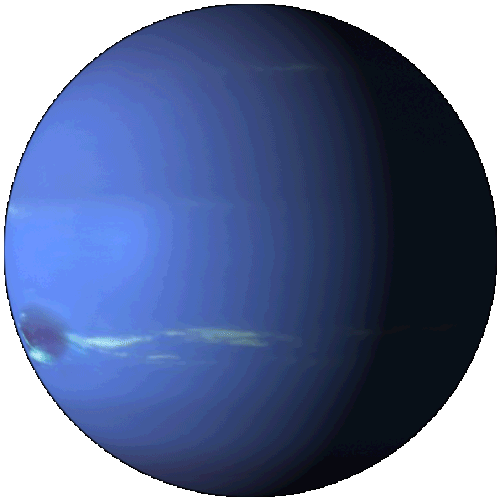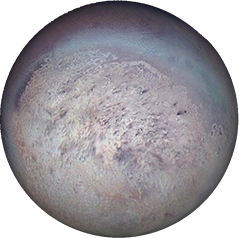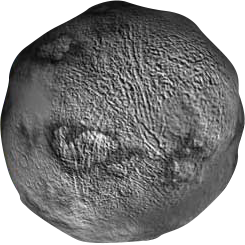Neptune

Satellites
- Triton
- Proteus
- Nereid
- Larissa
- Galatea
- Despina
- Thalassa
- More...
- Radius: 3,959 miles
- Distance From Sun: 483,800,000 miles
- Mass: 1.898E27 kg
- Gravity: 24.79 m/s²
- 1 Day: 0d 9h 56m
- Orbital Period: 12 years
- Population: 0 confirmed
Neptune
Neptune is the eighth and farthest known planet from the Sun in the Solar System.
In the Solar System, it is the fourth-largest planet by diameter, the third-most-massive planet, and the densest giant planet. Neptune is 17 times the mass of Earth and is slightly more massive than its near-twin Uranus, which is 15 times the mass of Earth and slightly larger than Neptune. Neptune orbits the Sun once every 164.8 years at an average distance of 30.1 AU (4.5 billion km). It is named after the Roman god of the sea and has the astronomical symbol ♆, a stylised version of the god Neptune's trident.
Neptune is not visible to the unaided eye and is the only planet in the Solar System found by mathematical prediction rather than by empirical observation.
Unexpected changes in the orbit of Uranus led Alexis Bouvard to deduce that its orbit was subject to gravitational perturbation by an unknown planet. Neptune was subsequently observed with a telescope on 23 September 1846 by Johann Galle within a degree of the position predicted by Urbain Le Verrier. Its largest moon, Triton, was discovered shortly thereafter, though none of the planet's remaining known 13 moons were located telescopically until the 20th century. The planet's distance from Earth gives it a very small apparent size, making it challenging to study with Earth-based telescopes. Neptune was visited by Voyager 2, when it flew by the planet on 25 August 1989. The advent of the Hubble Space Telescope and large ground-based telescopes with adaptive optics has recently allowed for additional detailed observations from afar. Trioton Proteus Neptune has 14 known moons, which are named for minor water dieties in Greek Mythology By far the largest of them is Triton, discovered by William Lassell on October 10, 1846, just 17 days after the discovery of Neptune itself; over a century passed before the discovery of the second natural satellite, Nereid. Neptune's outermost moon Neso, which has an orbital period of about 26 Julian years, orbits further from its planet than any other moon in the Solar System.Neptune's Largest Moons





